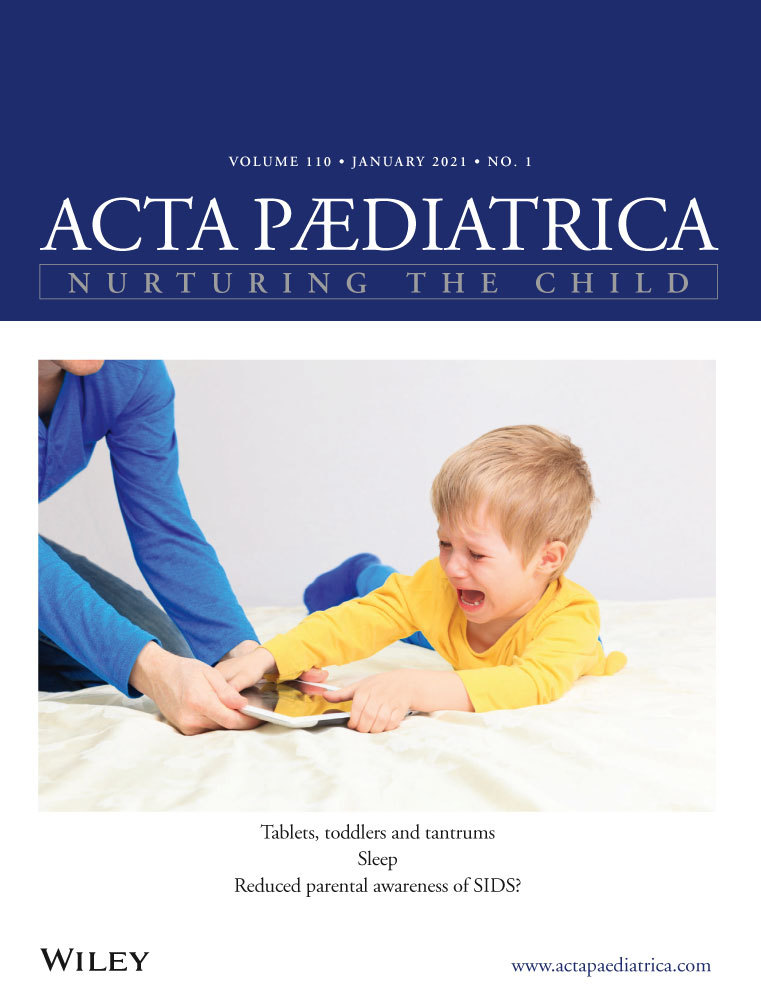Daunting but not impossible—Addressing child maltreatment in Bangladesh
Child abuse and neglect are pervasive throughout the world, and in many countries, children's exposure to maltreatment is the norm rather than the exception.1 This is evident in the article by Haque et al in this issue of Acta Paediatrica, which demonstrates that nearly all children interviewed in the study had experienced some form of psychological abuse and a majority had been exposed to neglect.2 Previous research by the same group showed similar findings regarding child physical abuse.3 In view of our increased understanding of the health and societal effects of adverse childhood experiences, the ramifications of this massive exposure to maltreatment among Bangladeshi children are likely to be profound.
In order to turn the tide of child maltreatment, it is vital to first understand the prevalence and spectrum of abuse and neglect as well as the risk factors associated with them. Approaches towards decreasing the incidence of violence and neglect through primary and secondary prevention may then address the key factors behind maltreatment in different areas through universal and targeted interventions tailored to the region. This study by Haque et al is therefore an important addition to the literature on child maltreatment in South Asia, and Bangladesh in particular, where there is a great paucity of research.
What is it that underlies the preponderance of child maltreatment in Bangladesh? As Haque et al point out, political unrest and deep bipartisan conflicts in post-colonial Bangladesh have left a legacy of violence, domination and subordination that are ingrained in Bangladeshi society. On top of this, poverty and social deprivation, including low levels of education among a large proportion of the population, are commonplace in Bangladesh.
Bangladesh is a country where natural disasters are a recurrent part of life for millions, causing family disruption, displacement, unemployment, financial hardship and disease, all of which inevitably have an adverse effect on the health and safety of the children. Those children who are directly affected by storms, flooding and landslides may feel the immediate hardships of the catastrophe, while many more will experience the latent effects of the burden heaped on their parents.4 Chronic or long-term stress erodes the fabric of empathy and tolerance and lowers the threshold for abuse and neglect.5, 6
Child labour and child marriage are two issues pertinent to child maltreatment that are not prevalent in most Western counties and are underrepresented in the scientific literature. Both are associated with poverty and contribute to lower levels of education and poorer health among the children, particularly girls, who are subjected.7 Haque et al found clear associations between these life circumstances and the risk of exposure to psychological violence and neglect.
Although the task is daunting, child maltreatment in Bangladesh can be prevented. The strategies need to build on salutogenesis, that is, creating the appropriate circumstances for good health and development on the individual, family, community and society levels. This includes identifying factors in the child's environment that are detrimental, including stress, violence, substance abuse and deprivation and finding ways to decrease their prevalence and treat them when they are manifest. But just as important is to identify and build on the protective factors that increase the resilience of the individual, the family and society as a whole. These include education, basic health care, parental support and access to social networks, but also democracy and political stability.
- ‘create safe, sustainable and nurturing family environments, and provide specialised help and support for families at risk of violence;
- modify unsafe environments through physical changes;
- reduce risk factors in public spaces (eg schools, places where young people gather) to reduce the threat of violence;
- address gender inequities in relationships, the home, school, the workplace etc;
- change the cultural attitudes and practices that support the use of violence;
- ensure legal frameworks prohibit all forms of violence against children and limit youth access to harmful products, such as alcohol and firearms;
- provide access to quality response services for children affected by violence;
- eliminate the cultural, social and economic inequalities that contribute to violence, close the wealth gap and ensure equitable access to goods, services and opportunities; and
- coordinate the actions of the multiple sectors that have role to play in preventing and responding to violence against children’.
Headway is being made in many parts of the world. Through dissemination of INSPIRE and the efforts of other global partnerships, steps are being taken towards realising the United Nations’ 2030 sustainable development goals, and ultimately the fulfilment of the Convention on the Rights of the Child.9 Until the spring of 2020, countries, agencies and organisations have been adopting policies that benefit children at an increasing pace. However, the COVID-19 pandemic has erupted on the scene as a new threat to child health and safety, especially as unemployment and poverty increase in the wake of lockdowns and economic slowing.10 This makes it even more important for decision makers to ensure that actions taken are in the best interest of the child. Each child who grows up without experiences of maltreatment can be the first branch to future generations free from the intergenerational burden of abuse and neglect.
CONFLICT OF INTEREST
The author has ongoing research collaboration regarding child abuse and neglect in the Swedish context with one of the authors (Staffan Janson) of the paper by Haque et al referred to here. The author has no other conflicts of interest.




